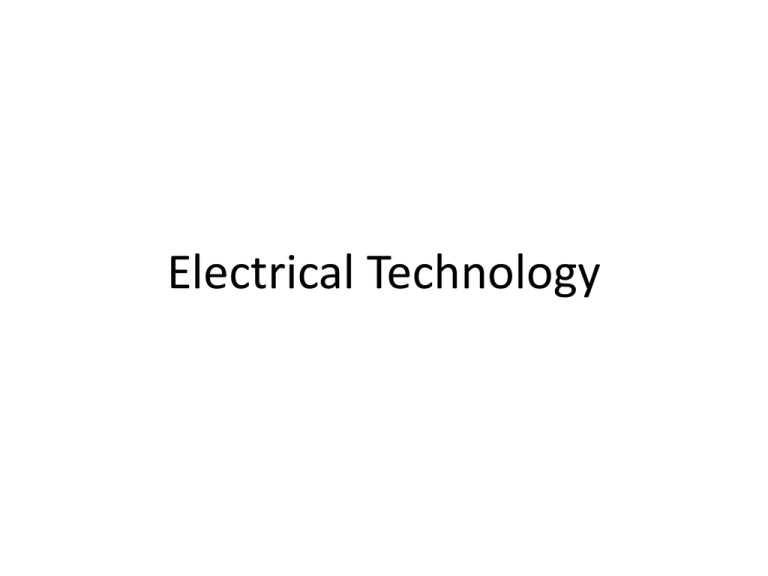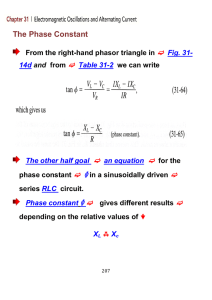RESONANCE Series Resonance
advertisement

Electrical Technology Contents • • • • • Resonance in Electric Ckt. Series Resonance Quality factor of coil at resonance Test yourself NPTEL Link Resonance In Electric Circuits Any passive electric circuit will resonate if it has an inductor and capacitor. Resonance is characterized by the input voltage and current being in phase. The driving point impedance (or admittance) is completely real when this condition exists. Series Resonance Consider the series RLC circuit shown below. V = VM ∠0 R L + V _ C I The input impedance is given by: 1 Z= R + j ( wL − ) wC The magnitude of the circuit current is; = I |= I | Vm R 2 + ( wL − 1 2 ) wC Series Resonance Resonance occurs when, 1 wL = wC At resonance we designate w as wo and write; 1 wo = LC This is an important equation to remember. It applies to both series And parallel resonant circuits. Series Resonance The magnitude of the current response for the series resonance circuit is as shown below. |I| Vm R Vm 2R Half power point w1 wo w2 Bandwidth: BW = wBW = w2 – w1 w Resonance, cont. • Resonance occurs at the same frequency regardless of the value of R • As R decreases, the curve becomes narrower and taller • Theoretically, if R = 0 the current would be infinite at resonance – Real circuits always have some resistance Power as a Function of Frequency • Power can be expressed as a function of frequency in an RLC circuit • This shows that at resonance, the average power is a maximum Quality Factor, cont. • A high-Q circuit responds only to a narrow range of frequencies – Narrow peak • A low-Q circuit can detect a much broader range of frequencies • Typical Q values in electronics range from 10 to 100


